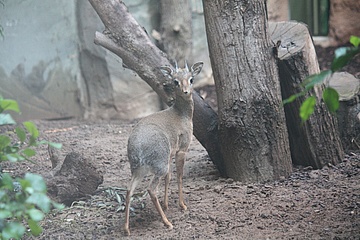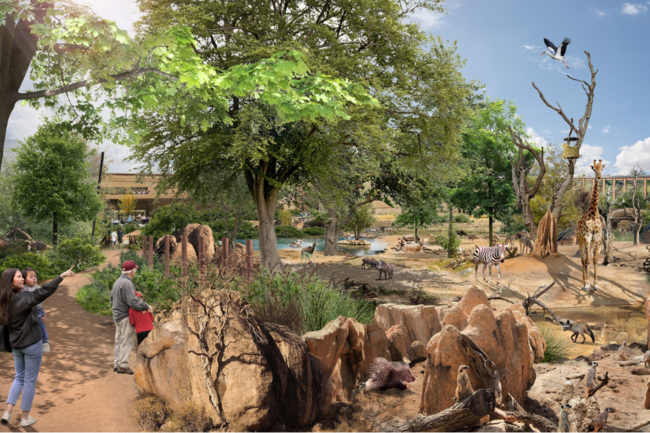(kus) The great apes in the Borgori Forest have got new neighbours: Kirk dikdiks. The dwarf antelope species is represented by one male and two females. Once they have settled in well, they are expected to roam the gorillas' outdoor enclosure.
Standing in front of the enclosure in Borgori Forest, you still don't see much at first glance, as the animals, still very shy, stay largely hidden in the lush vegetation of the enclosure. So you need a little patience to see the animals also called dwarf trunk or wind chime antelopes. Weighing a maximum of 7 kilograms and with a shoulder height of 40 centimetres, dikdiks are among the smallest hornbearers.
"Dwarf proboscis dikdiks have a greatly elongated proboscis-like nose - an adaptation to the high temperatures in their habitat. The nasal cavity, which is covered with a mucous membrane, is enlarged in this way. When they breathe, the warm blood in the heavily perfused mucous membranes is cooled by the airflow - this creates good thermoregulation," explains zoo director Professor Dr Manfred Niekisch.
Buck Paul is one year old and comes from Hannover Zoo. The two females, each eleven months old, came to Frankfurt from Antwerp and Leipzig.
Dikdiks usually live in pairs, but behaviourally they are also able to form small so-called "territorial harems" under certain ecological conditions. "Adult animals delimit their territories by dunging places as well as by means of a tar-like scent secretion of the pre-eye glands rubbed on twig tips. When necessary, they also defend their territories vehemently against other dikdiks," Niekisch said.
Kirk's dikdiks (Madoqua kirkii) inhabit dry areas in the open with brush and undergrowth that can be used as hiding places. The enclosure previously occupied by the Guerezas in Borgori Forest was therefore redesigned and densely planted to approximate the animals' natural habitat as closely as possible.
Two separate Kirk dikdik populations live in Africa: One is found in northeastern Africa, where other dikdik species are also found, and the other is native to Namibia. The species is currently not considered endangered. The total population is in the range of one million animals or more. Populations are declining in more densely populated areas, but the range also includes numerous protected areas













